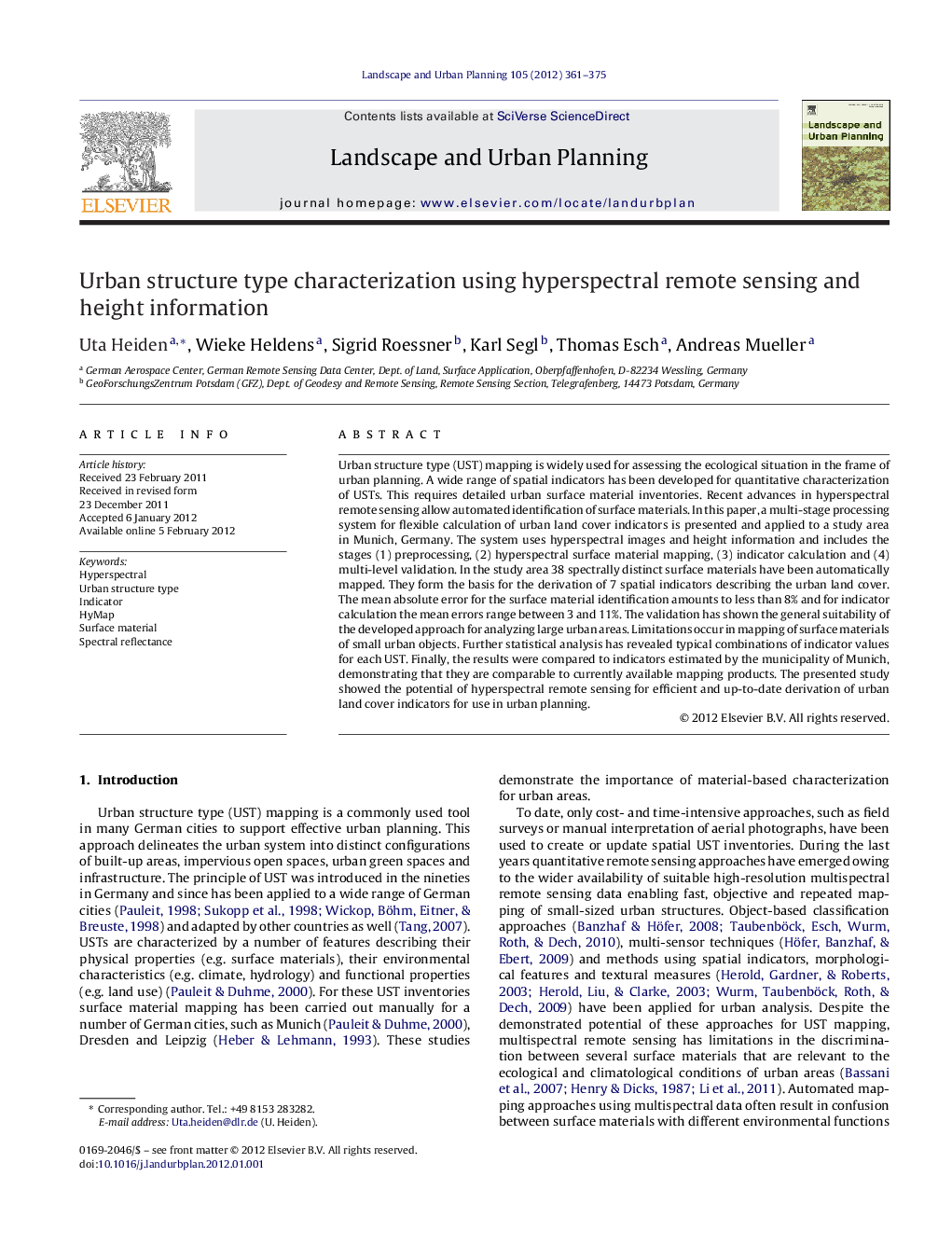| Article ID | Journal | Published Year | Pages | File Type |
|---|---|---|---|---|
| 1049485 | Landscape and Urban Planning | 2012 | 15 Pages |
Urban structure type (UST) mapping is widely used for assessing the ecological situation in the frame of urban planning. A wide range of spatial indicators has been developed for quantitative characterization of USTs. This requires detailed urban surface material inventories. Recent advances in hyperspectral remote sensing allow automated identification of surface materials. In this paper, a multi-stage processing system for flexible calculation of urban land cover indicators is presented and applied to a study area in Munich, Germany. The system uses hyperspectral images and height information and includes the stages (1) preprocessing, (2) hyperspectral surface material mapping, (3) indicator calculation and (4) multi-level validation. In the study area 38 spectrally distinct surface materials have been automatically mapped. They form the basis for the derivation of 7 spatial indicators describing the urban land cover. The mean absolute error for the surface material identification amounts to less than 8% and for indicator calculation the mean errors range between 3 and 11%. The validation has shown the general suitability of the developed approach for analyzing large urban areas. Limitations occur in mapping of surface materials of small urban objects. Further statistical analysis has revealed typical combinations of indicator values for each UST. Finally, the results were compared to indicators estimated by the municipality of Munich, demonstrating that they are comparable to currently available mapping products. The presented study showed the potential of hyperspectral remote sensing for efficient and up-to-date derivation of urban land cover indicators for use in urban planning.
► Multi-stage processing system presented that uses hyperspectral images and height information for flexible calculation of urban land cover indicators. ► Automated hyperspectral image analysis results in identification of 20 roofing materials, 5 fully impervious, 5 partially impervious and 8 non-artificial surface materials. ► Detailed surface material inventory enables derivation of 7 urban land cover indicators describing physical properties of the Earth's surface. ► Statistical analysis reveals typical combination of indicator values for UST's quantifying their main properties in an aggregated way.
